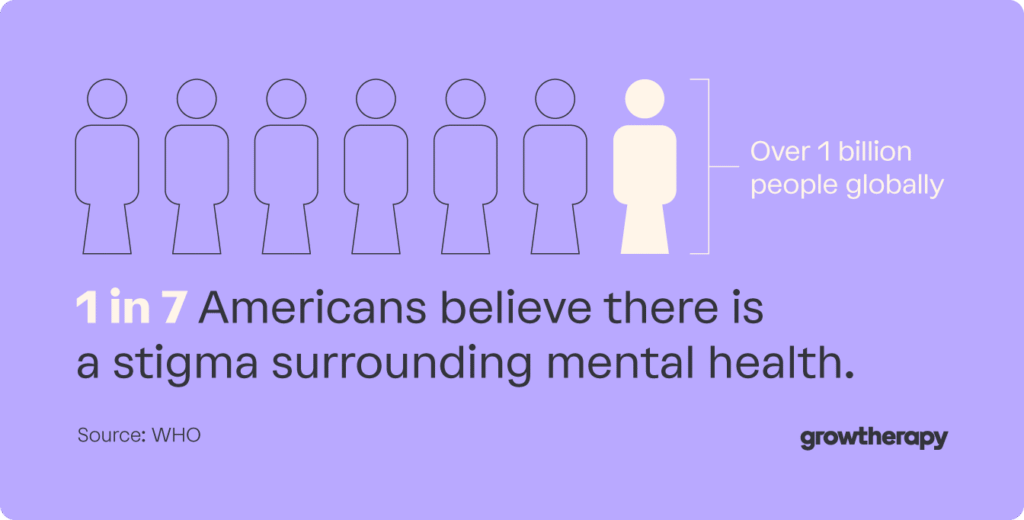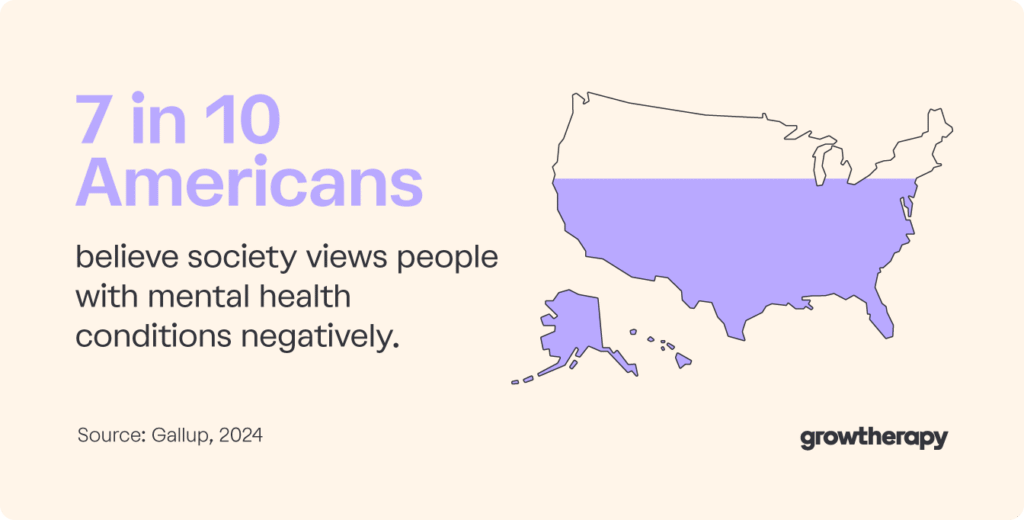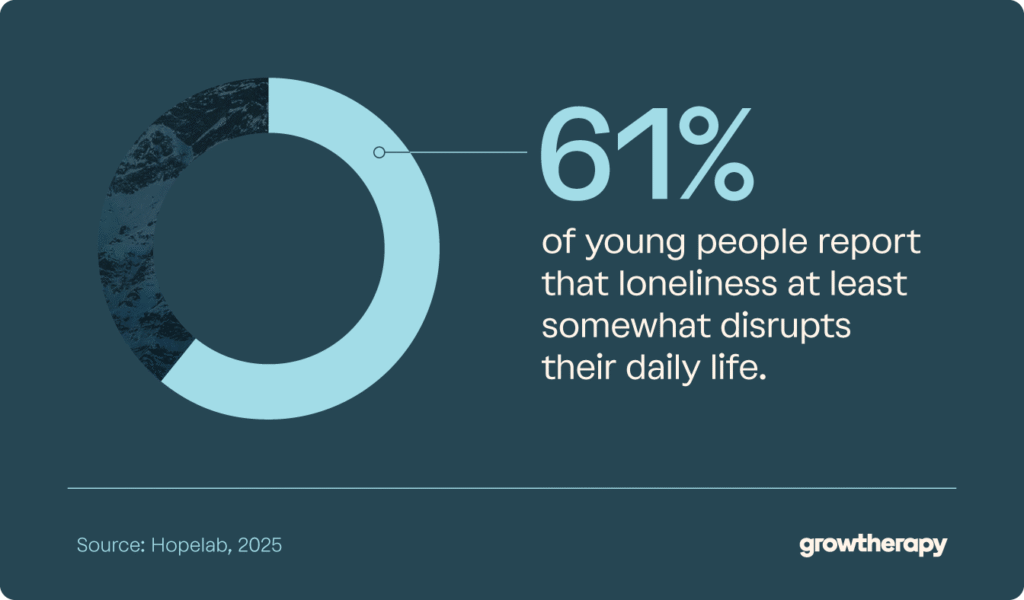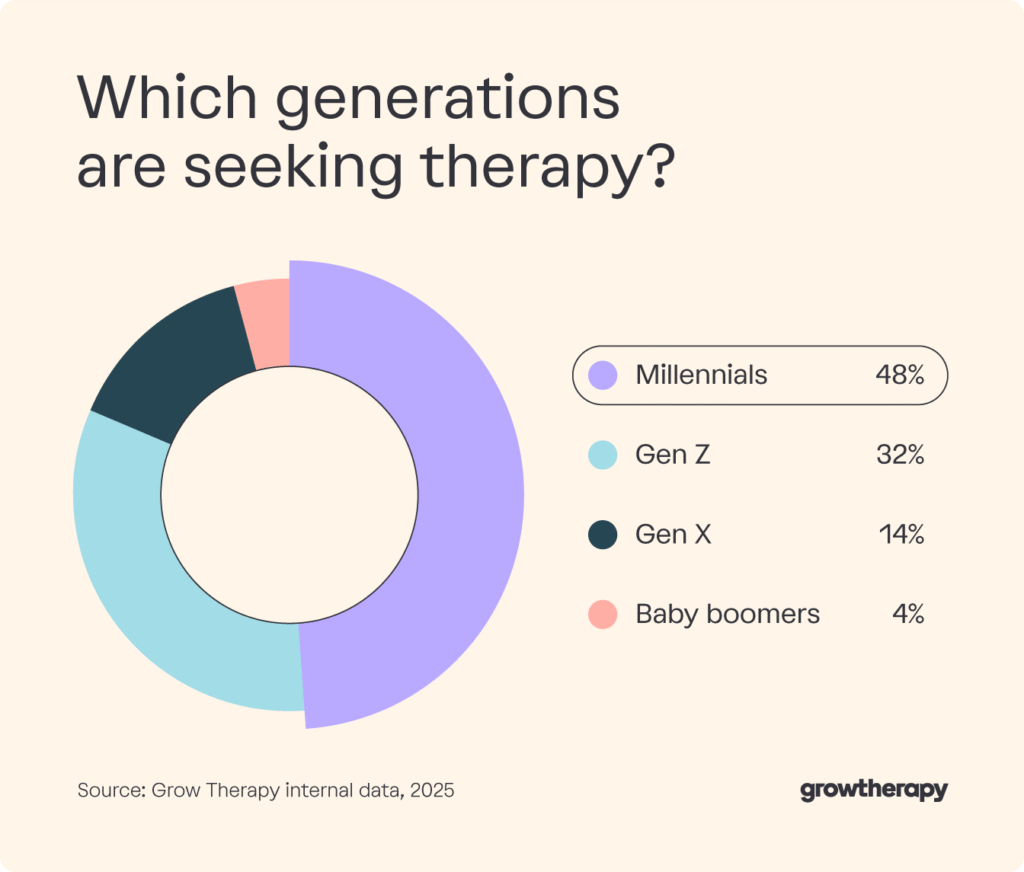Mental health affects all of us in some way, whether it’s our own experiences or those of the people around us. Anxiety, depression, stress, and other conditions are more common than many realize, and they can impact every part of life. Recent mental health statistics help put the scope of these challenges into perspective, showing just how widespread they are and who is most affected.
Looking at the numbers also highlights something important: Even though millions of people could benefit from support, access to care isn’t always easy. Gaps in treatment, stigma, and barriers like cost or finding the right therapist mean that many people go without the help they need. This post dives into the latest statistics on mental health to give a clearer picture of the challenges people face and why awareness and access to treatment matter.
Global mental health statistics
Mental illnesses have no boundaries, affecting people all over the world. Millions deal with conditions like anxiety, depression, or substance misuse, but not everyone has access to the care they need. Here are some of the most compelling worldwide mental health statistics.
- More than 1 billion people worldwide are living with a mental health condition, which is roughly 1 in every 7 people. (WHO, 2025)
- Over the course of a lifetime, about half of all people globally will experience some form of mental health disorder. (The Lancet Psychiatry, 2023)
- Mental health conditions are the second leading cause of years lived with disability (YLDs) worldwide. (WHO, 2025)
- Among women, the most prevalent mental health disorders are depression and specific phobias, while men are most affected by alcohol use disorder and depression. (The Lancet Psychiatry, 2023)
- In low-income countries, fewer than 10% of people who need mental health care actually receive care, compared to over 50% in higher-income nations. (WHO, 2025)
- About 71% of individuals with psychosis worldwide do not receive mental health services. (WHO, 2025)
- On average, less than 1.4% of health budgets in low- and middle-income countries are allocated to mental health. (WHO, 2025)
- Across 31 countries, 62% of people reported experiencing stress that affected their daily lives at least once in the past year. (Ipsos, 2024)
- Globally, 23% of people report feeling lonely for much of the previous day. (Gallup, 2024)

U.S. mental health statistics
The mental health landscape in the U.S. comes with its own set of challenges. High levels of stress, widespread stigma, and gaps in access to care all shape how Americans experience and manage mental health conditions. Understanding these numbers helps highlight where support is needed most.
- Roughly 1 in 4 U.S. adults (26.1%) have perceived themselves as having a mental health issue at some point in their lives. (SAMHSA, 2024)
- 7 in 10 Americans believe there is a stigma surrounding mental health. (Gallup, 2024)
- Over half of Americans (53%) report that someone in their household or a close family member has been diagnosed with a mental health condition. (Gallup, 2024)
- About 18.3% of U.S. adults currently have depression or are receiving treatment for it. (Gallup, 2025)
- 12.1% of U.S. adults regularly experience feelings of worry, nervousness, or anxiety. (National Center for Health Statistics, 2024)
- 21.7% of U.S. adults reported experiencing symptoms of generalized anxiety disorder in the past two weeks. (SAMHSA, 2024)
- Around 16.8% of Americans ages 12 and older met the criteria for a substance use disorder in the past year. (SAMHSA, 2024)
- 34.5% of U.S. adults with a mental illness also have a substance use disorder. (SAMHSA, 2024)
- 11.5% U.S. adults report difficulties participating in social activities due to a physical, mental, or emotional condition. (NHIS, 2024)
- In August 2025, 5,081 emergency room visits were related to mental health, out of 100,000 total visits. (CDC, 2025)

Youth mental health statistics
Young people today are facing more mental health challenges than ever before. Stress, anxiety, depression, and the pressures of school and online life are taking a significant toll. These child and teen mental health statistics give us a glimpse into the reality that so many young people are navigating.
- About 1 in 7 adolescents in the world experiences a mental health condition. (WHO, 2025)
- In 2023, nearly 3 in 10 high school students (29%) in the U.S. reported that their mental health was poor most or all of the time during the past month. (CDC, 2024)
- 42% of U.S. parents report that their child’s mental health was negatively affected by the COVID-19 pandemic. (Gallup, 2025)
- Among U.S. college students, roughly one-third have been diagnosed with anxiety (36%), and 30% with depression. (Healthy Minds, 2023)
- At least 43% of U.S. college students have considered leaving school in the last six months due to mental health. (Gallup, 2024)
- 61% of young people in the U.S. say feelings of loneliness at least somewhat interfere with their everyday activities. (Hopelab, 2025)
- Depression symptoms are reported almost twice as frequently in girls than boys, affecting 16% of female adolescents and 10% of male adolescents in the U.S. (CDC, 2023)
- 48% of U.S. teenagers believe social media has a mostly harmful effect on people their age, up from 32% in 2022. (Pew Research Center)
- Two-thirds of LGBTQ+ young people (66%) in the U.S. report experiencing symptoms of anxiety recently. (The Trevor Project, 2024)
- In the U.S., half of LGBTQ+ youth who sought mental health support in the past year were unable to access the care they needed. (The Trevor Project, 2024)

Gen Z mental health statistics
While mental health challenges affect young people across the board, Generation Z is facing them in ways that feel especially intense. Between constant stress and early career demands, this generation is navigating unique pressures that set them apart from older generations.
- Nearly half (46%) of Gen Z Americans have been diagnosed with a mental health condition, most often anxiety, depression, or ADHD. (Harmony Healthcare IT, 2025)
- More than one-third of young adults (37%) in the U.S. believe they may be living with a mental health condition that has not been formally diagnosed. (Harmony Healthcare IT, 2025)
- Roughly 40% of Gen Z globally report needing help with their mental health. (UNICEF, 2025)
- 4 in 10 Gen Z adults in the world say they feel anxious or stressed most or all of the time. (Deloitte, 2025)
- Globally, 54% of Gen Z say stress has reached a level that has prevented them from working at least once in the past year. (Ipsos, 2024)
- Globally, Gen Z women report higher rates of persistent depression than their male peers, with 40% saying they have experienced prolonged periods of sadness or hopelessness multiple times. (Ipsos, 2024)
- Almost half (46%) of U.S. Gen Z workers say stigma keeps them from pursuing mental health care. (The Hartford, 2025)
- 42% of Gen Z Americans say they are currently in therapy — a 22% increase since 2022. (Harmony Healthcare IT, 2025)
- Among global frontline workers, 83% of Gen Z report burnout, and more than a third (36%) say they would quit because of it. (UKG, 2024)
- Only 40% of parents of Gen Z youth in the U.S. report talking openly with their children about mental health, despite it being one of their top concerns. (Gallup, 2024)
Suicide prevention statistics
Suicide touches far too many lives every year, both in the U.S. and around the world. By looking at the numbers, we can understand who is most at risk and highlight the importance of timely support and intervention.
- Worldwide, approximately 740,000 people die by suicide each year, which averages to one death every 43 seconds. (The Lancet Public Health, 2025)
- In the U.S., suicide is the 11th leading cause of death overall. (CDC, 2023)
- Globally, suicide ranks as the third leading cause of death among young people. (WHO, 2025)
- Men die by suicide 3.8 times more than women in the U.S. (CDC, 2023)
- Suicide attempts are disproportionately high among LGBTQ+ youth in the U.S.: 39% seriously considered attempting suicide in the past year, including 46% of transgender and nonbinary young people. (The Trevor Project, 2024)
- About 73% of global suicides occur in low- and middle-income countries. (WHO, 2025)
- Serious suicidal thoughts are reported by 5.5% of U.S. adults, jumping to 12.6% among those ages 18-25. (SAMHSA, 2024)
- One U.S.-based study found that preventive measures in healthcare can reduce risk: Integrating suicide care practices into primary care visits lowered suicide attempts by 25% in the three months following the visit. (NIMH, 2024)
Mental health treatment and therapy statistics
With so many people facing mental health challenges, it’s no surprise that access to care has a long way to go. But the demand for therapy is growing, and more people are seeking help than ever before — a hopeful sign that mental health is becoming increasingly accessible and less stigmatized for more and more people.
- Therapists in the U.S. are seeing an increase in first-time therapy seekers, with 68% reporting a rise. (Grow Therapy, 2024)
- According to U.S. therapists, 78% of their patients start to see results after just two to eight sessions. (Grow Therapy, 2024)
- Among Americans seeking therapy, millennials represent the largest share at 48.1%, followed by Gen Z at 31.7%, Gen X at 14.5%, and baby boomers at 3.9%. (Grow Therapy internal data, 2025)
- Worldwide, only 9% of people living with depression receive minimally adequate treatment, leaving a vast majority untreated. (WHO, 2025)
- Across people diagnosed with any mental health or substance use disorders in multiple countries, fewer than 7% receive treatment that is considered effective. (JAMA Psychiatry, 2025)
- Among individuals with anxiety, mood, or substance use disorders globally in the past year, only 13.9% received treatment. (BioMed Central, 2025)
- 58.8% of adults with both a substance use disorder and any mental illness (AMI) received treatment for at least one of those conditions in 2024. (SAMHSA, 2025)
- Just 14% of U.S. adults reported receiving counseling or therapy from a mental health professional in the past year. (CDC, 2024)
- The top obstacles to care are cost, cited by 52% of Americans, and difficulty finding a provider, cited by 42%. (Gallup, 2024)
- 57% of U.S. adults feel extremely or very comfortable talking with a close friend about their mental health. (Pew Research Center, 2024)
- Just over half of Americans (53%) believe counseling or therapy is a very effective or effective treatment. (Gallup, 2024)
- More than half of U.S. adults (51%) believe it’s important for primary care doctors to screen patients for anxiety and depression. (Gallup, 2024)
- Women are more likely than men to report being asked about their mental health during medical visits (71% vs. 60%). (Gallup, 2024)

Find mental health support with Grow Therapy
All in all, these mental health statistics bring to light the prevalence of mental health challenges and the importance of addressing them. They remind us that while mental health struggles are common, support is available and more accessible than ever — particularly as mental health coverage and access continue to change.
If you’re looking for support, Grow Therapy makes it easy to connect with a licensed therapist from anywhere. Whether it’s anxiety, depression, or everyday stress, you can book a session with Grow Therapy today and start addressing your mental health your way.
